Wayne C. Allen's Blog, page 31
July 17, 2016
On Being Seen
Synopsis: On Being Seen — it takes a bit of effort to watch ourselves story-making, and to let that go long enough to see and be seen
Of Wayne’s many books, the one closest to today’s topic is: This Endless Moment
[image error]
Being seen is alternately scary and desired above all. And our conditioning tends to get in the way.
I remember being in some workshop somewhere and spotting a friend across the room. We met up after the gig was over, and she said to me something to the effect of, “Isn’t it nice to meet up with a member of your real family?”
Later, that got unpacked as an expression of how good it feels to look over the heads in a crowd and “recognize” someone that you are simpatico with.
All of which has to do with being seen
The photo at top was taken in the bus station in Liberia, Costa Rica. The young woman was staring off into space; then she’d focus in on the guy in front of her, then she’d sigh, and look sad. I watched this for a bit, then ended up taking a picture, and when I blew it up, she seemed to be looking right at me.
I take a lot of photos of people, as this blog is relentlessly in need of them. Lately, I’ve been using my quite good cell phone camera, and the downside is that I can’t really tell what I’ve got until later. Plus, it has the disconcerting habit of shooting the photo several seconds after I hit the button, so images are often a surprise.
I was amazed that she seemed to be looking right at me, and in a sense seeing to and through me. I saved the shot, and used it to lead me to this short article.
I have a sense that the feeling we get when we think that we “click” with someone is likely hard-wired into our genes, and also, it’s not very reliable.
Last week, we talked a bit about form and emptiness, and also about how we “identify” with stereotypes. By identify I mean that we make determinations about the character of others based upon smoke and mirrors.
For example, I notice a predilection in myself to “like” Canadians, and to have all kinds of judgements about people from the US of A, despite being from there myself. I left decades ago, and like to forget that 25 years ever happened.
One of our weirder friends knows this, so he continually apologizes in my presence for making disparaging remarks about the US, despite the fact that I self-identify as a Canadian, and have lived there since 1975.
And up goes my back.
All of this has nothing to do with anything other than the stories I tell myself, and the fact that my “quasi-friend” likes to poke at people to see if he can get a rise out of them. This doesn’t work without the cooperation of the “pok-ee.”
[image error]
As I said last week, our inner reactions to things we provoke ourselves over can’t be helped. We all do it. It’s part of what the Buddha called monkey mind. Our minds can barely stand not chattering–leaping from branch to branch–going after the “better” fruit. We all do it; we just need to notice.
So, have another look at the lead photo. See if you can tell yourself a story about the guy, the girl, the situation. Let your imagination run a bit.
See? Monkey mind.
Where it goes all topsy-turvy is when we give validity to the stories we create. And even if we could walk into the photo and go ask the young woman what’s on her mind, we’d only get the part of the story she decided to share.
Same thing with the initial illustration–the one about “meeting our tribe.” That kind of “soul-mate” stuff often gets shoveled in group meetings, especially if the group can be in any way construed as being a collection of “aren’t we special” folk. We create a story about our specialness, flesh it out, and then desperately want to add others to the mix.
It’s the same process that causes us to think we are in love.
Hormones signal attraction, and rather than going “Wow! I’m turned on!” we go, “This is true love!” And once that bridge is crossed, for many couples the rest of their time together is an often futile attempt to turn the partner from who they really are into who we think they ought to be.
Being seen, on the other hand, has very little to do with either trying to fit yourself in, or trying to make others fit into some dopey story. Being seen is dropping the games and the stories, and simply being honest–both with yourself and with others.
Being seen makes little of the games our heads are playing, and a lot of simply opening the doors to being honest. It’s treating fellow humans as the unique beings they are, while ruefully watching our little heads try to mash them up and fit them in a box.
Clearly, true intimacy is about this kind of dialogue: here is who I am right now, here is the story I am telling myself, and now that that’s out of the way, what’s up for you?
Less certainty, more curiosity.
Not easy, not fun; it’s hard work to keep the monkey mind in the background while opening yourself to self and other scrutiny.
But hey, most people feel lost and alone and misunderstood, right?
So, maybe another way of interacting is necessary.
And that, my dears, starts with you.
div.wpob_template_main.wpob_template_main_1{display: none;}
.wpob_template_main_1{
background-color: #fff;
max-width: 750px;
height: 310px;
border-width: 7px;
border-color: #ccc;
margin-top: ;
margin-bottom: ;
margin-left: ;
margin-right: ;
}
.wpob_template_main_1 .wpob_box_heading{
background-color: #8f0a0b;
}
.wpob_template_main_1 .wpob_box_heading_text{
font-family: 'Shadows Into Light', serif;
font-size: 24px;
line-height: 40px;
color: #fff;
text-align: center;
text-transform: uppercase;
font-weight: 900;
margin: 0;
}
.wpob_template_main_1 .wpob_box_media_container{
display: inline-block;
width: 120px;
height: 164px;
}
.wpob_template_main_1 .wpob_box_content_container{
}
.wpob_template_main_1 input.wpob_input_fields{
width: 200px;
line-height: 36px;
margin-bottom: 5px;
border: 1px #ddd solid;
vertical-align: middle;
font-size: 16px;
color: #999;
font-size: Arial;
padding: 0px 8px;
}
.wpob_template_main_1 .wpob_box_image{
width: 100%;
height: 100%;
}
.wpob_template_main_1 .wpob_box_media_center{
display: block;
margin: 0 auto;
padding: 10px;
}
.wpob_template_main_1 .wpob_box_media_right{
float: right;
padding: 10px 0px 10px 20px;
}
.wpob_template_main_1 .wpob_box_media_left{
float: left;
padding: 10px 20px 10px 0px;
}
.wpob_template_main_1 .wpob_box_content{
font-family: Fjalla One;
font-size: 18px;
line-height: 24px;
color: #333;
text-align: center;
padding: 1em;
}
.wpob_template_main_1 .wpob_box_button_div{
text-align: center;
padding: 0em 1em 1em 1em;
}
.wpob_template_main_1 .wpob_box_button_div a.wpob_box_button, .wpob_template_main_1 .wpob_box_button_div button.wpob_box_button{
font-family: Georgia;
font-size: 18px;
color: #fff;
background-color: #0c8442;
border-radius: 5px;
width: ;
padding: 10px 15px;
}
.wpob_button_gradient{background-image : -moz-linear-gradient(top, #0c8442, #057538);background-image : -ms-linear-gradient(top, #0c8442, #057538);background-image : -webkit-gradient(linear, #0c8442, #057538);background-image : -webkit-linear-gradient(top, #0c8442, #057538);background-image : -o-linear-gradient(top, #0c8442, #057538);background-image : linear-gradient(top, #0c8442, #057538);filter : progid:DXImageTransform.Microsoft.gradient(startColorstr="#0c8442", endColorstr="#057538", GradientType=0);border-color : +#0c8442 #057538 #057538;background-color : #0c8442;}
A Shameless Bribe!!
[image error]
Receive The Pathless Path by e-mail!
As a thank-you, we'll send you a link to our pdf booklet, Exercises in Consciousness.
What could be better than that??
Cick and Join Us!
The post On Being Seen appeared first on The Pathless Path.
Original article: On Being Seen. If you're reading this on another site, let me know...








 Related StoriesMuhammad Ali – how to live a lifeOverreactingBreaking Through Beliefs
Related StoriesMuhammad Ali – how to live a lifeOverreactingBreaking Through Beliefs
July 10, 2016
The Emptiness of Everything
Synopsis: The Emptiness of Everything — watching the workings of our mind, and noticing how we try to invent meanings, and how doing this gets us into trouble, is the point of the Heart Sutra
Of Wayne’s many books, the one closest to today’s topic is: Half Asleep in the Buddha Hall
[image error]
Last week I did a riff on death and “gone.” And I mentioned that the line I quoted was from the Heart Sutra, a key Buddhist text.
Much like many things Buddhist, the concepts are tricky and counter-intuitive.
Rather than get into a line-by-line analysis, let me instead toss out some more global interpretations. This curious things in this Sutra have to do with emptiness, dependent origin, and that bodhi, or enlightenment, has to do with being present, rather than “understanding.”
We’ve had quite the few weeks worldwide, what with terrorism, Brexit, the killing of two men by police, and the killing of 5 police officers by an assassin with an automatic rifle.
I really worked at writing that sentence, by the way, as a “reporting,” rather than adding in personal judgements.
My first go at it, I wrote, “… by a nut-bar with an automatic rifle.” The nut-bar part is the imposition of me on the situation. Which is what the Heart Sutra addresses.
Because we are so proud of our reasoning abilities, we take it as gospel that we can understand, or make sense out of, that which is before us.
“If only we could figure out (fill in the blank.)” “If only you would see it my way…”
It’s not like this is the first time through this topic for us, but here goes. The concept of emptiness might just be the Buddha’s greatest insight… if there was such a thing as greatest, and if my opinion has anything to do with anything. And that’s the point.
When we look at the first line of the Heart Sutra, and read, as it is usually translated, “Form is emptiness, emptiness is form,” it’s easy to go “huh?”
The first time I came across this, way back in a religion class at Elmhurst College, circa 1968, I know I was puzzled. And being who I appeared to be back then, (as far as anyone is anything…) being a white, 17-year-old liberal Christian, my “belief” was, “Yikes! Those Buddhists were kinda dumb. No wonder their religion isn’t as good as my religion.”
Sigh.
Emptiness goes with dependent origin
The idea being presented is that nothing has a pure essence. Nothing has a meaning. One way of saying that is,
“Everything is related to something else, so therefore one cannot attribute a fixed meaning to anything.”
So, emptiness means that things do not have fixed, clear, precise “meanings.”
Illustrations abound. Take size. You look at a van, and say “big car!” But compared to what? A Prius? A Hummer? Clearly, the size is relative to something else. This is the dependent origin part. The van’s size, for example is not a fixed quantity; it’s not “big, small,” etc. As we can say is, “That van certainly is!” Or, “That specific van is bigger than a Prius and smaller than a Hummer.”
The Buddha’s great insight about all of this was developed as he studied the workings of his mind. Let me describe this again.
We come into the world as tabula rasa (blank slates.) Over the years, we are taught… well… everything. And we are initially taught to label.
Which is handy. Knowing which mushroom to eat is a good thing. Knowing my name is Wayne is a good thing, especially when being called for dinner. Knowing that I am an individual and not an undifferentiated mass is helpful.
And labelling–being able to place our van in between a Prius and a Hummer as regards size–is necessary to do science, for example. So the issue is not “labelling” per se.
The problem comes when we add judgements to labels.
All (fill in the blank FITB) are bad.
People with (FITB) can’t be trusted.
Women who (FITB) are heartless.
Now, these stereotypes (which are often accurate in general, but useless specifically) are taught to us. We don’t develop them naturally. Depending upon how were were brought up, we either hold them gently, or rigidly.
Example: Costa Ricans (in general, see above) tend to hold dim views of Nicaraguans. They’re not blatantly racist, but many have negative judgements. Also, Nicaragua is not viewed well by many from the US of A. While considered one of the safest countries in Central America, many warn that the country is overrun with ladrons (thieves.)
I just presented a global stereotype about an entire country, or class of people.
It may or may not be true, but it is prevalent. However…
We just spent our second week in Nicaragua, and I can say, (from personal experience,) that every Nicaraguan we met was kind, interesting… and we didn’t get robbed even once. 
July 2, 2016
Life, Death, and “Gone”
Synopsis: Life, Death, and “Gone”– we take life for granted, putting off the work we need to do. And then, poof… we’re gone.
We’re back in our lovely little condo in Costa Rica after a busy week in Granada, Nicaragua. Learned some more Spanish, and really enjoyed our time there. But it’s good to be “home!”
Of Wayne’s many books, the one closest to today’s topic is: Living Life in Growing Orbits
[image error]
So, last Sunday we headed back to Costa Rica from Nicaragua, on a quite nice bus. The trip went pretty well, but maybe an hour south of Granada we got stuck in a traffic jam. Turned out there’s been an accident.
We sat for about an hour, then inched past the crash. A transport truck was on its side; it stretched from the other lane, over a ditch, and the cab was on its side in the tall grass.
Then… we passed a crumpled motorcycle.
Then, two “lumps,” each covered over with a blanket. Clearly, the recently deceased occupants of the crumpled moto.
Lump in throat time.
My head went to the concluding lines of the “Heart Sutra:”
Gate gate paragate parasasam gate bodhi svaha.
I first learned this mantra from Ram Dass, who used it to teach how to use a mala for chanting / meditation. Being a sutra, or a mantra, it defies easy translation. But we’ll have a try at it anyway.
Now, the traditional translation of this short mantra has to do with enlightenment, and how that plays out. You see that aspect in the word “bodhi,” which means awakening or enlightenment.
The word that caught my attention, however, was gate.
Gate means “gone.”
I thought the “gone” part also might apply to the two lives snuffed out in an instant. Here, then gone. It puts another spin on the traditional translation.
OK, first, the traditional interpretation
The front end is pretty easy to translate. It’s the last two words that are a little tricky when combined. We’ve got bodhi=enlightement, or waking up, coupled with the word svaha, which is colloquial. Someone translated the two words as: “Enlightenment! Whoopee!”
Here are two other attempts at translating the mantra:
Edward Conze: Gone, gone, gone beyond, gone altogether beyond, O what an awakening, all hail!
The 14th Dalai Lama went with: Go, go, go beyond, go thoroughly beyond, and establish yourself in enlightenment.
The rest of the Heart Sutra, which I just might talk about soon, has a real “Here is how to live in the world as it actually is” flavour to it. But let’s get real.
And “real” is: life is as it is, and one aspect of life is that life is simply the forerunner to death.
The issue becomes: how do I live an enlightened life NOW? In this moment? How do I wake up NOW? Because each of us is the living, breathing being, while at the same time, each of us is a blanket-covered lump on the side of the road.
Try Conze’s translation, above, with a slightly different translation in the context of the moment of death:
Gone, gone, gone beyond, gone altogether beyond, O what an awakening! Shit!
What an awakening, what a surprise, indeed!
We tend to act like humans instead of Buddhas (our true nature, the Buddha told us,) and one thing that separates us from Buddhahood is simply this:
We plan on sorting things out “tomorrow.”
“After I have wasted a lot of time feeling sorry for myself.”
“After I find the right person.”
“After… after… after.”
We are addicted to pain, sorrow, and especially addicted to thinking we actually have a tomorrow. Or even a next moment, seeing that, in this instant, a metaphorical truck might crash in our path.
Gate, gate paragate parasasam gate bodhi svaha.===Gone. Gone. Really gone. Altogether gone. Oh what an awakening!
If only I’d not wasted my life and had instead done the work necessary.
Of course, I’m making no judgements about the people from the accident. I’m talking about where my head went upon seeing the accident. I only want to say that they likely hadn’t planned on that particular ending to their story. Hadn’t planned to be done so soon, to be gone so soon. It was just going to be a normal, uneventful ride.
Which reminds me of John Lennon’s line: “Life is what happens to you while you’re busy making other plans.”
The “gate” mantra addresses this by suggesting that there is something “beyond,” but it’s not in the heaven sense. It’s going beyond the petty meannesses, the dramas we create, the “putting it off” stuff that is the basis of most of our days, me, of course, included.
It’s a beyond state that lets us see, right now, that the only moment we can completely engage with–the only moment we have to do our lives differently, is this one.
With this breath, right now.
No waiting, no pity parties, no sleeping through the moment. No, “if only’s” no “shoulda, woulda coulda.”
Now.
It’s far better, I think, to be gone now, before you’re gone… forever.
div.wpob_template_main.wpob_template_main_1{display: none;}
.wpob_template_main_1{
background-color: #fff;
max-width: 750px;
height: 310px;
border-width: 7px;
border-color: #ccc;
margin-top: ;
margin-bottom: ;
margin-left: ;
margin-right: ;
}
.wpob_template_main_1 .wpob_box_heading{
background-color: #8f0a0b;
}
.wpob_template_main_1 .wpob_box_heading_text{
font-family: 'Shadows Into Light', serif;
font-size: 24px;
line-height: 40px;
color: #fff;
text-align: center;
text-transform: uppercase;
font-weight: 900;
margin: 0;
}
.wpob_template_main_1 .wpob_box_media_container{
display: inline-block;
width: 120px;
height: 164px;
}
.wpob_template_main_1 .wpob_box_content_container{
}
.wpob_template_main_1 input.wpob_input_fields{
width: 200px;
line-height: 36px;
margin-bottom: 5px;
border: 1px #ddd solid;
vertical-align: middle;
font-size: 16px;
color: #999;
font-size: Arial;
padding: 0px 8px;
}
.wpob_template_main_1 .wpob_box_image{
width: 100%;
height: 100%;
}
.wpob_template_main_1 .wpob_box_media_center{
display: block;
margin: 0 auto;
padding: 10px;
}
.wpob_template_main_1 .wpob_box_media_right{
float: right;
padding: 10px 0px 10px 20px;
}
.wpob_template_main_1 .wpob_box_media_left{
float: left;
padding: 10px 20px 10px 0px;
}
.wpob_template_main_1 .wpob_box_content{
font-family: Fjalla One;
font-size: 18px;
line-height: 24px;
color: #333;
text-align: center;
padding: 1em;
}
.wpob_template_main_1 .wpob_box_button_div{
text-align: center;
padding: 0em 1em 1em 1em;
}
.wpob_template_main_1 .wpob_box_button_div a.wpob_box_button, .wpob_template_main_1 .wpob_box_button_div button.wpob_box_button{
font-family: Georgia;
font-size: 18px;
color: #fff;
background-color: #0c8442;
border-radius: 5px;
width: ;
padding: 10px 15px;
}
.wpob_button_gradient{background-image : -moz-linear-gradient(top, #0c8442, #057538);background-image : -ms-linear-gradient(top, #0c8442, #057538);background-image : -webkit-gradient(linear, #0c8442, #057538);background-image : -webkit-linear-gradient(top, #0c8442, #057538);background-image : -o-linear-gradient(top, #0c8442, #057538);background-image : linear-gradient(top, #0c8442, #057538);filter : progid:DXImageTransform.Microsoft.gradient(startColorstr="#0c8442", endColorstr="#057538", GradientType=0);border-color : +#0c8442 #057538 #057538;background-color : #0c8442;}
A Shameless Bribe!!
[image error]
Receive The Pathless Path by e-mail!
As a thank-you, we'll send you a link to our pdf booklet, Exercises in Consciousness.
What could be better than that??
Cick and Join Us!
The post Life, Death, and “Gone” appeared first on The Pathless Path.
Original article: Life, Death, and “Gone”. If you're reading this on another site, let me know...








 Related StoriesSelf Responsibility and Waking UpTattoos and ImpermanenceSituational Awareness
Related StoriesSelf Responsibility and Waking UpTattoos and ImpermanenceSituational Awareness
June 25, 2016
Dealing with Different Approaches
Synopsis: Dealing with Different Approaches — differences are in our heads — they’re not a part of the situation
Apologies for no article last week. Darbella and I are on a road trip to Nicaragua, for Spanish classes and to renew our passports. We return to Costa Rica tomorrow!
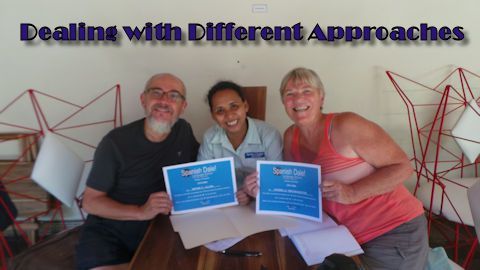
We’ve once again met interesting people on our travels, and have had a blast in Granada, Nicaragua. The country is definitely different from Costa Rica, and Granada is a major city, so we’ve been dodging traffic while surrounded by “muchas personas.”
We’ve had a bit of a discussion about travelling and about flexibility.
I think Flexibility is the key to doing what we do… moving into a community for long stretches… in this case, living with a Nica family while taking Spanish lessons. As opposed to vacations, which a lot of people take… and then either stay at resorts, or gripe about how “It’s not like this at home.”
I guess this is a lot like Zen, and of course Zen makes no sense to some people. All that “nothing means anything, so just be with it” stuff.
I’m endlessly fascinated with differences.
One of the people also staying with our family is a woman who is entering her second year of a Masters in social work back in the States. We’ve had interesting discussions over meals about this topic… how Flexibility and the willingness to be open to the experience at hand is key to working through what initially appear to be differences.
This fits with our endless articles concerning how, even with couples living in the same space, there is never even a similar experience.
Dar and I also notice this as we study Spanish. Her skill set differs from mine, despite our having been in all the same classes.
This can be disconcerting, especially when people forget that their way of seeing things is not universal. It is all too easy to get caught in being right, as opposed to seeing clearly.
For example, one day we were conjugation irregular verbs in the present tense. Fun, fun, fun. The teacher tossed out poder, which means could. My mind blanked, and I couldn’t remember what it meant or how to conjugate it.
Dar blazed right through it, and, seeing ne sitting there staring into the middle distance, said, “You know this,” which landed with a thud.
She then said, “puedo” which is first person.
Boom. I was into, “I’m stupid, this is terrible, I’ll never get this.” Then I went to “Dar should have said…” along with me getting quiet and grumpy. So much so that I can’t even remember how I conjugated the verb (puedo, puedes, puede, podemos, pueden, if you’re curious 
June 11, 2016
Tattoos and Impermanence
Synopsis: tattoos and impermanence — it’s hard to believe, but nothing is as it seems. We are a process, and nothing we see, think, feel or are physically, stays the same.
Of Wayne’s many books, the one closest to today’s topic is: Half Asleep in the Buddha Hall
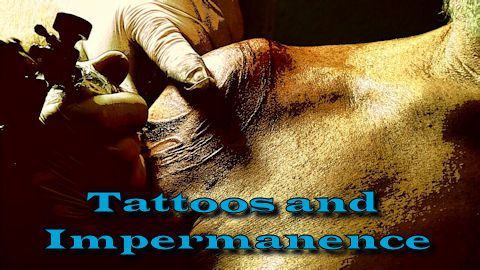
Our lives include many paradoxical and contradictory elements. Things are usually not just one way—they are many ways at once. To begin with, we are definitely alive, yet at the same time we are dying. Every moment is a moment of life and at the same time a moment of death in that each moment is gone even as it arises, completely gone, never to reappear. In our usual conception of our lives, we are alive now and dead later. But this isn’t really the case. Zen discourse fully recognizes and embraces this and the many other paradoxes, contradictions, and conundrums that actually do make up a true conception of our lives, and this is why Zen seems at first to willfully not make sense.
Excerpted from: What Is Zen? Plain Talk for a Beginner’s Mind
by Norman Fischer & Susan Moon, page 84

So, I got another tattoo this past Tuesday — a Zen (brushwork style) circle (enso) with a flying raven. The Zen circle is a symbol of wholeness and completion, and encompasses the idea stated in the quote above. The heart sutra has it, “Form is Emptiness, Emptiness is Form.”
And the Raven? A reminder that in Zen, wisdom is found in the cracks.
Today, the peeling process began. Tattoos, new ones, peel. The ink is actually put into the dermis (the second layer of skin,) and the epidermis (the top layer) is stained in the process. You could say that the entire first tattoo disappears as the top layer falls away.
Now, of course, our skin is doing that all the time. It’s not obvious, but it’s happening. You do see it if you get a sunburn — the top layer separates away in bigger chunks than usual, and many are the folk who then spend the day pulling at it.
I’m remembering a nursing student on a jungle trip with Dar and me who’s entire chest was burned and peeling, and she picked and sang, “Peelings! Nothing more than peelings!” to the tune of “Feelings.”
Interesting, though, that we think of our skin–our pigmentation, the moles and liver spots–as being permanent. In reality, the skin you are looking at now is less than 35 days old. Or better, the skin you are looking at has replaced itself over the last 35 days.
Weird thought — that means you’ve left your entire skin lying around. In your bed, in your car, at your desk, on your partner, etc.
Of course, this applies to all the cells in your body… colon cells last only 4 days, and are replaced, for example. Thus, you really aren’t so permanent. And that’s the point of the top quote.
But, you seem to be. You look in the mirror day to day, and there you are.
Darbella took lots of photos of the tattooing process. The one above is a modification of a “regular” photo, something we both like doing. I used it because it’s dramatic and different. But key to today’s article is that the photo is an illusion. Never in this world did the scene look like that.

the original shot
Even more interesting, the original photo only captured an instant of time. Obviously. The tattoo needle was changing things second by second. And that, too, is how life is.
We want life to be like we want life to be, and life is a moving target.
When couples fight (even divorced couples 
June 4, 2016
Muhammad Ali – how to live a life
Synopsis: Muhammad Ali – how to live a life — finding your way in the world requires the ability to stand tall and speak your truth
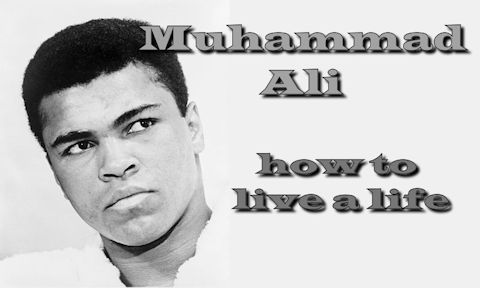 This image is available from the United States Library of Congress’s Prints and Photographs division under the digital ID cph.3c15435.
This image is available from the United States Library of Congress’s Prints and Photographs division under the digital ID cph.3c15435.OK, so my addled little brain is likely going to butcher this story, but here goes.
My political leanings started out pretty conservative, but in 1966, things shifted. One change was opening my eyes to the stupidity of the War in Viet Nam. No question, this was self-serving, as I was only a couple of years from draft age. But it made no sense.
Then, Muhammad Ali stated,
I ain’t got nothing against no Viet Cong; no Viet Cong never called me nigger.
Muhammad Ali
At first, I wasn’t sure how this ought to play out. I’d also not been able to figure out his conversion to Islam. Remember, I was 15 at the time, had never met a Muslim, and up until then, most sports figures weren’t exactly known for their brains, politics, or religion.
I can remember thinking, “What’s up with that?’ or whatever the 60s equivalent was.
And I remember thinking the draft board would solve it quickly, so he could get back to the ring.
Nope. He was not allowed to fight from March 1967 to October 1970.

Anyway, in 1968 I went off to Elmhurst College, outside of Chicago. I’d swung even further to the Left after the assassinations of Martin Luther King and Bobby Kennedy, did my fair share of protests, etc. And kept hearing about Muhammad Ali — that he was out doing speeches, fighting the draft board.
The best way to make your dreams come true is to wake up.
Muhammad Ali
One evening I was sitting in the Student Union Building, smoking my pipe and reading. There was a small commotion at the door, and a group of people came up the stairs. Towering over all of them was Muhammad Ali.
One rumour was that he knew a female student, but more likely, he’d been brought in to do a speech. In any event, we ended up in the Cafeteria. He climbed onto a table, and he started talking.
I can’t remember a single thing he said, but I was unalterably changed by his speech. On a mundane level, I gave up thinking all boxers were dumb. The man riffed on the War, politics, race, religion. He peppered his speech with poems that were clever and to the point. And he did the whole thing in a way that was blunt, clear, and yet gentle.
As was his handshake.
That’s what I really remember. He was 10 inches taller than me, and had a hand the size, I thought, of a melon. When he shook my hand, it was a gentle squeeze. I made some inane comment about hoping he’d win in court and get back in the ring, and about how much I enjoyed his speech. “Thanks.” A wink. A smile.
So, that’s my Ali story.
But I was metaphorically in his corner for all of his fights, all of his comebacks, and then, reading and watching what I could after Parkinson’s had hold of him.
I mourned when he died.
Impossible is just a big word thrown around by small men who find it easier to live in the world they’ve been given than to explore the power they have to change it. Impossible is not a fact. It’s an opinion. Impossible is not a declaration. It’s a dare. Impossible is potential. Impossible is temporary. Impossible is nothing.
Muhammad Ali
What I really want to say is that the man stood his ground. Sure, he could come across as arrogant, but that just got the message across. He showed the world who he was, unapologetically, in an age when such behaviour from a black man was not acceptable to many in the States.
Hating people because of their color is wrong. And it doesn’t matter which color does the hating. It’s just plain wrong.
Muhammad Ali
He became a Muslim because his heart hurt, and devoted himself to his faith without being preachy, without being judgmental.
Service to others is the rent you pay for your room here on earth.
Muhammad Ali
He fought political battles with the same grace and fluidity with which he boxed.
You lose nothing when fighting for a cause … In my mind the losers are those who don’t have a cause they care about.
Muhammad Ali
He showed all of us what it was to stand up tall (at least as tall as we could 
May 28, 2016
Two Solitudes
Synopsis: Solitudes, and the dynamics of relating, in 2 acts. A look at the dance of coming back together.
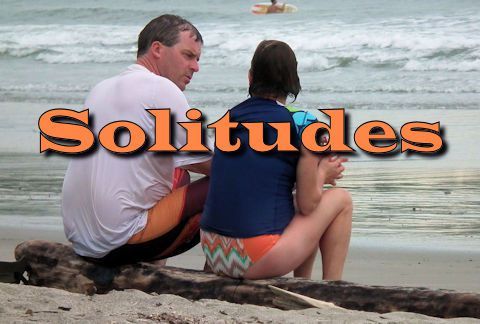
Of Wayne’s many books, the one closest to today’s topic is: The. Best. Relationship. Ever.
Just back from a lovely 2 hours on the playa (beach,) soaking up rays through a few clouds, swimming in the ocean, and… people watching. I was also thinking about this article, and the cosmos provided.
Two Solitudes

The beach is almost deserted, save a few sun-soakers. The tide is out; the surf gently crashes.
Her skin shouts that she’s a new arrival to Playa Samara; she’d be considered pale in Ontario. She’s wrapped in the garb of the sun fearing–tee shirt, shorts kissing her knees, floppy hat. Pale face, pale arms, pale legs poke out, announcing her first beach walk.
She’s walking slowly, distracted. She watches her feet as if she expects them to do something special. Then she wrings her hands. She glances at the ocean, then finds her feet more interesting.
A scowl of sadness is etched on her face. Her steps falter, then resume. She weaves a bit, as if where she is going is unimportant, so long as it’s away from whatever is behind her. She cants left, and soon is walking along the water line, still seeing nothing.
A few minutes later, there’s a new arrival to Playa Samara; he’d be considered pale in Ontario. He’s wrapped in the garb of the sun fearing–tee shirt, cargo shorts kissing his knees, Tilley hat. Pale face, pale arms, pale legs poke out, announcing his first beach walk.
He pauses, then stares out to sea through a camera. A picture or two later, he continues his slow march. He watches his feet as if he expects them to do something special. He glances at the ocean, takes another photo, caresses his camera, then studies the sand at his feet.
She’s stopped walking well down the beach. She’s standing at the water’s edge, hands on hips. Staring at nothing.
His walks some more, and his path begins to veer toward the water. His head is on a pivot, looking everywhere but… there.
She does not move, does not look right, nor left.
He reaches her, but stands apart from her, behind her, staring past her to what must be the most interesting chunk of water on the planet.
She drops her arms to her sides.
He walks close, then past her by one step, extends his arm over her shoulder, and pulls her in.
Their contact is tentative, a testing the waters kind of contact. And then, a hug. Words.
They walk side by side to the end of the beach, and return, hand in hand. Deep in conversation.
I’d make the case that this little drama isn’t a bad description of the trajectory of dialogue. Of course, as a distant observer, all I really know is what I saw. For all I know, they were discussing last night’s Raptors loss.
But where my head went (as I invented a back-story for them) was, good on them.
Here’s the fictional version I invented as I watched them.

They’d come to Playa Samara with high hopes. They’d been stuck of late; the same few issues were swamping their relationship. A week in paradise would surely fix things.
And then, there it was again, right after breakfast. They’d not come to paradise unburdened, because their baggage had just arrived.
Words were said, things became heated.
So, she took a walk. Down the beautiful beach, mind churning, stomach churning. As usual, she thought, he didn’t get it.
He sat in their room, and sulked. They’d been over this ground before; she was unreasonable.
She wandered slowly down the beach, wondering what to do, how to change the pattern of their communication. Her meandering path seemed to her to mirror their relationship.
He decided to stretch his legs. He grabbed his camera, because this had absolutely nothing to do with his going after her. So he followed her without following her. Took pictures.
She reached the water line, and her anger turned to sadness and disappointment. They seemed to have lost the will to work things through. Too much blaming, finger pointing. Even now, he wasn’t beside her, where she wanted him to to be.
He found himself pulled down the beach; without knowing it, he was practically stepping in her foot prints. He saw that she had stopped, dead ahead.
But he wasn’t quite ready to talk; he needed to make some kind of point. He walked past her.
And then, he took a step back. His partner and best friend was starting out at a gray ocean. He reached out his arm.
She did not pull away. She did not even speak. She just slid into his tentative embrace.
And then, they talked.
So, who knows what was really up? This fictional part is pure projection, and pretty close to a couple of disjointed conversations Dar and I have had — ones that started to go off the rails because both of us turned 10 at the same time.
Each time, there was walking away, sulking, sanctimonious self-righteousness. And Dar likely did some non-helpful stuff too.

May 21, 2016
Avoidance Mechanisms
Synopsis: avoidance mechanisms — the things we do to not deal wit our issues, and what to do first to get past it
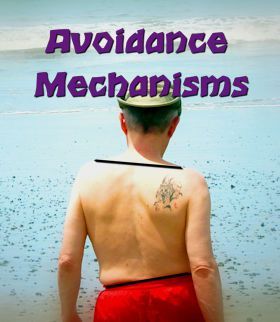
Tilt and compensation
Of Wayne’s many books, the one closest to today’s topic is: This Endless Moment
Some years back, (clearly prior to my last tattoo) I did something to my SI joint. It got to be a chronic thing, and I always knew it was out because my hips were “canted” of to the right.
Strangely, it wasn’t all that painful. More of an annoyance than the agony I’ve felt a few times when I’ve put my lower back right out.
But bodies are funny. They’re like interconnected stacks, and when something is out somewhere, often the body compensates by shoving something else out, so that the body remains in balance. You can see that in the photo; my shoulders are tilted to offset my hips.
Anyway, I got it pretty much fixed, thanks to a couple of physiotherapists, some exercises to help straighten my hips out, some acupuncture, and chiropractic adjustments, etc., although both of my physio guys did that too.
I subscribe to a site called Psychetruth. Among other things, they are a group of massage therapists, and they do tons of videos. I tend to have a look at the “lower back” ones, and last week, “Yoga for lower back pain”
showed up. Can’t see the vodeo? Here’s the link
I watched some of it.
I was impressed with the front end of the video. The instructor demonstrated some gentle stretches one could do in the morning, say, in bed. What was key for me was her suggestion of gently probing for tightness, aches, and pain.
Which got me thinking about avoidance mechanisms.
In a sense, when our bodies go out of alignment, the physical compensation is an avoidance. It’s the body’s way to torque itself into a semblance of balance.
Thus me, right hip out, upper body tipped the other way.
We do this with our “life pains,” too. Rather than go after the source (that would be me, messing with me, or you, messing with you) we:
blame others
blame genetics / upbringing
blame our financial / work situation
We:
shut down
we tell others that they need to change so we can be happy
we run away for “a break,”
we leave the relationship
We:
drink, do drugs, or do endorphin producing things to “get high” – but really to avoid
we try to find a doctor or therapist who will agree with our judgement that externals are to blame
we go to workshops and seminars, and take away the idea that others are wrecking our vibe
The one thing we do not do is take full and complete responsibility for who we are and where we are stuck.
The thing about the ideas in the video, above, is that gently probing identifies… wait for it… our internal pain points. In other words, if I’m rocking my back and poking around, and I hit a spot that is sore / tight — that’s me, and only me. I have to figure out what to do about it.
Of course, I could find a doctor to operate and make me even less flexible. I could take something and get temporary relief. I could limp and try to ignore it.
Or, I could deal with it, directly.
That was the point of my article about the guy with the beatbox, and me annoying myself, and out went my back. I dealt with it physically, through physio and with Dar working on me. Then, I worked on in mentally and emotionally, looking deeply at how and why I set myself off.
My back feels great, thanks!
There is no cure for who we are and how we operate. We tend to do the things repeatedly. But if all we do is look outside, nothing changes. We have to be willing to “gently probe” our sore spots, our stuck spots, our blocked spots. We have to seek out direction for shifting things.
And then! We need to address our issues directly, fully, deeply and gently.
As often as we mess with ourselves, making it the work of a lifetime.
Because avoiding, changing dance partners, or blaming works about as often as you’d guess.
Precisely never
Subscribe to our BLOG,
The Pathless Path
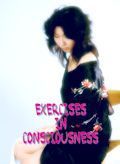
Sign up and receive a free digital
e-booklet -- my guide to Zen living --
Exercises in Consciousness
(you'll get a link to the booklet once you confirm your subscription!)
Name:
Email:
Powered by Subscribers Magnetdiv.wpob_template_main.wpob_template_main_1{display: none;}
.wpob_template_main_1{
background-color: #fff;
max-width: 750px;
height: 310px;
border-width: 7px;
border-color: #ccc;
margin-top: ;
margin-bottom: ;
margin-left: ;
margin-right: ;
}
.wpob_template_main_1 .wpob_box_heading{
background-color: #8f0a0b;
}
.wpob_template_main_1 .wpob_box_heading_text{
font-family: 'Shadows Into Light', serif;
font-size: 24px;
line-height: 40px;
color: #fff;
text-align: center;
text-transform: uppercase;
font-weight: 900;
margin: 0;
}
.wpob_template_main_1 .wpob_box_media_container{
display: inline-block;
width: 120px;
height: 164px;
}
.wpob_template_main_1 .wpob_box_content_container{
}
.wpob_template_main_1 input.wpob_input_fields{
width: 200px;
line-height: 36px;
margin-bottom: 5px;
border: 1px #ddd solid;
vertical-align: middle;
font-size: 16px;
color: #999;
font-size: Arial;
padding: 0px 8px;
}
.wpob_template_main_1 .wpob_box_image{
width: 100%;
height: 100%;
}
.wpob_template_main_1 .wpob_box_media_center{
display: block;
margin: 0 auto;
padding: 10px;
}
.wpob_template_main_1 .wpob_box_media_right{
float: right;
padding: 10px 0px 10px 20px;
}
.wpob_template_main_1 .wpob_box_media_left{
float: left;
padding: 10px 20px 10px 0px;
}
.wpob_template_main_1 .wpob_box_content{
font-family: Fjalla One;
font-size: 18px;
line-height: 24px;
color: #333;
text-align: center;
padding: 1em;
}
.wpob_template_main_1 .wpob_box_button_div{
text-align: center;
padding: 0em 1em 1em 1em;
}
.wpob_template_main_1 .wpob_box_button_div a.wpob_box_button, .wpob_template_main_1 .wpob_box_button_div button.wpob_box_button{
font-family: Georgia;
font-size: 18px;
color: #fff;
background-color: #0c8442;
border-radius: 5px;
width: ;
padding: 10px 15px;
}
.wpob_button_gradient{background-image : -moz-linear-gradient(top, #0c8442, #057538);background-image : -ms-linear-gradient(top, #0c8442, #057538);background-image : -webkit-gradient(linear, #0c8442, #057538);background-image : -webkit-linear-gradient(top, #0c8442, #057538);background-image : -o-linear-gradient(top, #0c8442, #057538);background-image : linear-gradient(top, #0c8442, #057538);filter : progid:DXImageTransform.Microsoft.gradient(startColorstr="#0c8442", endColorstr="#057538", GradientType=0);border-color : +#0c8442 #057538 #057538;background-color : #0c8442;}
A Shameless Bribe!!
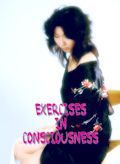
Receive The Pathless Path by e-mail!
As a thank-you, we'll send you a link to our pdf booklet, Exercises in Consciousness.
What could be better than that??
Cick and Join Us!
The post Avoidance Mechanisms appeared first on The Pathless Path.
Original article: Avoidance Mechanisms. If you're reading this on another site, let me know...








 Related StoriesSelf Responsibility and Waking UpMy Husband and My PelvisSelfish, Self-aware, Selfless
Related StoriesSelf Responsibility and Waking UpMy Husband and My PelvisSelfish, Self-aware, Selfless
May 14, 2016
Situational Awareness
Synopsis: situational awareness is the ability to work with internal and external, in harmony, and work with the most data possible
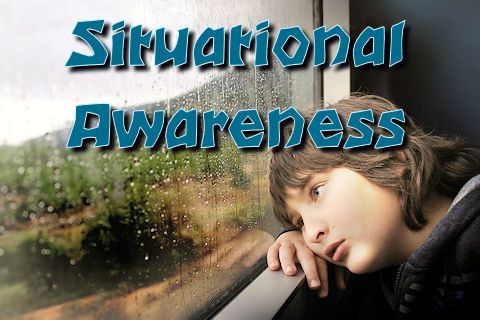
Of Wayne’s many books, the one closest to today’s topic is: This Endless Moment
For the last two weeks or so, I’ve been writing about what you could call “subjective experience.”
We mostly want to forget just how subjective it all is. We live in our little bubbles, and make guesses as we deal with “outside.” Except, it’s scary to realize just how different our experiences are, so we’re taught, early on, to pretend that we see the same.
The only time we really notice is when someone, say, like Trump shows up, and likely (if you’re reading this blog, anyway) you go, “Whoa! What planet is he from?” In other words, how can someone’s perspective be so much different from mine?
It’s also what I was writing about last week, as I described the incident with the guy and the loud music.
I’ve thought about that from several perspectives, and even mentioned one last week:
2. he has no situational awareness (“I’d never do something like that!”)
Which also fits with my reference, above, to Trump. (“I’d never think like that!”)
But let’s have a look at situational awareness, shall we? As with much of life, there are three possibilities — negative / neutral (functional) / and excessive:
SB — situational blindness (numbness, insensitivity)
SA — situational awareness
SD — situational dependence (hyper-awareness, sensitivity)
My topic last week has to do with the first on this list, SB.
My judgement was that the guy was blind to his situation — to the field — to his environment and surroundings. I have no way of actually knowing his process, but he was quite invested in talking loudly to his friend, and was seemingly unaware:
a) of the music’s volume, and
b) of the presence of others

Me. Me. Mememe
So, not to beat the guy to death. SBs typically never learn to “read a room” to get a feel for who and what is around them. We call such people “bulls in a china shop.”
For example, a few weeks ago, I mentioned a guy who kept walking in on his 30-year-old daughter, fresh from the shower. He had no clue why she was upset.

I wonder what they think of my butt….
The other side of the coin is situational dependence — SD. Most of us have gone through a stage or two of this: high school tends to bring this out. We are constantly scanning the faces of the people around us, and trying to guess how they feel about us. And then, we shift our behaviour accordingly, despite, lots of times, not having actually heard from the other people.
All to not stand out in the crowd.
It takes a lot to get over this — many people become “people-pleasers” never saying “no,” going through life hyper-aware. The craftier of these become the “I’m… just so sensitive! I… feeeeeeel what others feel!” kind of folk. They make a career out of guessing, “feeling,” and reacting.
And, of course, the situationally blind just love the situationally dependent. They often marry them!
Why? Because they can play them. The situationally blind might be thought of as narcissistic… into their own stuff to the exclusion of others, whom they don’t even notice. Or, if they do notice, they are good at pulling a pout, or making demands… their expectation is that others will always placate them.
There’s actually nothing more amusing than the look on the face of an SB when their SD spouse stops giving in.
The third option is the balance option.
To be an SA is to be awake. In other words, to notice what is going on around you, to encourage others to let you know what is up for them, to let others know how you are, and then — only then — to state what you will do next.
In other words, not too hot, not too cold… just right.
In both of the extremes, the person is choosing to act with partial information, and to miss reality.
For the SB, arrogance and excessive belief in one’s “rightness” (internal is all that matters) leads to a one up position.
For the SD, deference and the excessive belief in one’s “wrongness” (external is all that matters) leads to a one down position.
The middle path is the Pathless Path.
Being situationally aware is the best of both worlds, and provides the most possible information. You’re getting it from everywhere, taking the time to listen and evaluate, and thereby making better, more healthful choices and decisions.
This week, see where you focus. How often are you insensitive / oversensitive? Where is the middle ground? Play with this, and see if you can find your place of awareness.
Subscribe to our BLOG,
The Pathless Path

Sign up and receive a free digital
e-booklet -- my guide to Zen living --
Exercises in Consciousness
(you'll get a link to the booklet once you confirm your subscription!)
Name:
Email:
Powered by Subscribers Magnetdiv.wpob_template_main.wpob_template_main_1{display: none;}
.wpob_template_main_1{
background-color: #fff;
max-width: 750px;
height: 310px;
border-width: 7px;
border-color: #ccc;
margin-top: ;
margin-bottom: ;
margin-left: ;
margin-right: ;
}
.wpob_template_main_1 .wpob_box_heading{
background-color: #8f0a0b;
}
.wpob_template_main_1 .wpob_box_heading_text{
font-family: 'Shadows Into Light', serif;
font-size: 24px;
line-height: 40px;
color: #fff;
text-align: center;
text-transform: uppercase;
font-weight: 900;
margin: 0;
}
.wpob_template_main_1 .wpob_box_media_container{
display: inline-block;
width: 120px;
height: 164px;
}
.wpob_template_main_1 .wpob_box_content_container{
}
.wpob_template_main_1 input.wpob_input_fields{
width: 200px;
line-height: 36px;
margin-bottom: 5px;
border: 1px #ddd solid;
vertical-align: middle;
font-size: 16px;
color: #999;
font-size: Arial;
padding: 0px 8px;
}
.wpob_template_main_1 .wpob_box_image{
width: 100%;
height: 100%;
}
.wpob_template_main_1 .wpob_box_media_center{
display: block;
margin: 0 auto;
padding: 10px;
}
.wpob_template_main_1 .wpob_box_media_right{
float: right;
padding: 10px 0px 10px 20px;
}
.wpob_template_main_1 .wpob_box_media_left{
float: left;
padding: 10px 20px 10px 0px;
}
.wpob_template_main_1 .wpob_box_content{
font-family: Fjalla One;
font-size: 18px;
line-height: 24px;
color: #333;
text-align: center;
padding: 1em;
}
.wpob_template_main_1 .wpob_box_button_div{
text-align: center;
padding: 0em 1em 1em 1em;
}
.wpob_template_main_1 .wpob_box_button_div a.wpob_box_button, .wpob_template_main_1 .wpob_box_button_div button.wpob_box_button{
font-family: Georgia;
font-size: 18px;
color: #fff;
background-color: #0c8442;
border-radius: 5px;
width: ;
padding: 10px 15px;
}
.wpob_button_gradient{background-image : -moz-linear-gradient(top, #0c8442, #057538);background-image : -ms-linear-gradient(top, #0c8442, #057538);background-image : -webkit-gradient(linear, #0c8442, #057538);background-image : -webkit-linear-gradient(top, #0c8442, #057538);background-image : -o-linear-gradient(top, #0c8442, #057538);background-image : linear-gradient(top, #0c8442, #057538);filter : progid:DXImageTransform.Microsoft.gradient(startColorstr="#0c8442", endColorstr="#057538", GradientType=0);border-color : +#0c8442 #057538 #057538;background-color : #0c8442;}
A Shameless Bribe!!

Receive The Pathless Path by e-mail!
As a thank-you, we'll send you a link to our pdf booklet, Exercises in Consciousness.
What could be better than that??
Cick and Join Us!
The post Situational Awareness appeared first on The Pathless Path.
Original article: Situational Awareness. If you're reading this on another site, let me know...








 Related StoriesIt’s ALL PerspectiveRetirement BeardYin and Yang – the dance
Related StoriesIt’s ALL PerspectiveRetirement BeardYin and Yang – the dance
May 7, 2016
Overreacting
Synopsis: Overreacting — we get ourselves into trouble when we go into judgement, and miss how our reaction has nothing to do with the situation in front of us.
Of Wayne’s many books, the one closest to today’s topic is: This Endless Moment

OK, so last week I was writing the article on Saturday, while sitting at the Rancho (covered area with tables) at our condo complex.
I wasn’t really meaning to link these articles, but here we go.
Some of my blog readers love it when I write about when I screw up, and not being shy about my ability to still do so, let me tell you what happened, then give you a look at my excuses, and then, well, I’ll unpack what would have been a better approach.
OK, so Darbella and I were sitting there, computers in front of us, working. A guy we know popped in — he’s part of the team that we rent from. We like him, hadn’t seen him in months. Had a chat. He mentioned that friends of his were staying at the complex.
He left to talk to his friends. Moments later, he returned, friends in tow. The pool is right next to the rancho. The 3-year-old hops into the pool, followed by the mom. The dad says, “I’ll get my music can.”
Hmm.
Dar exits to grab us some lunch, the guy we know sits with his feet in the pool, and the other guy sets a beatbox or something down next to pool. Hits play.
Noise! Loud, loud noise! The three adults start shouting over it, carrying on a conversation over the music. A moment later, mom swims over and downs the volume a tad. Shouting! Continues!
My brain hurts. I’m having trouble writing. I start seething inside. Briefly consider getting my external speaker and blasting Barry Manilow or something back at them.
I then hear the noise-maker’s Southern accent, and I’m off to the internal races, doing a screed about Ugly Americans.
The next atrocious song comes on, along with a bump in volume.
I’ve had it. So, get this: I pull the power cord from my computer, pick it up, and march off toward my condo. Dar’s heading my way with a tray of food. I say, (loudly) “That music is too damn loud, so let’s go inside.” Takes us another trip to get the rest of our stuff.
Guy with the loud music says: “Is my music too loud for you, SIR? I could turn it down.”
Me: “Don’t bother now.”
Away I stomp.
Finish the article. You know. The one titled “It’s ALL Perspective.”
An hour later, after a swim, I blow out my back removing my swim suit.
Nice, huh?
Here are my excuses:
He’s American
he has no situational awareness (“I’d never do something like that!”)
I’m not in a relationship with the guy, so using the communication model was not necessary.
I’m a much better/more considerate person then he.
I have a right to be pissed off.
And on and on.
I have a friend here who is also a chiropractor, and who does an interesting form of kinesiology — an approach that gets to the heart of the matter. Literally. I went to see him yesterday, still nursing my back.
One thing he said: “Or, you could have just asked him to lower the volume. That’s a win / win, not a win / lose.”
Here’s the scoop:

Grumpy much?
As I’ve written about ad nauseam, I spent the first 32 years of my life reacting out of anger and arrogance. I think of that guy — that side of me — as my mouthy 7 year old. He is background, and has been for decades. He never comes out with Dar; in fact, he hasn’t run my mouth since 1986.
But.
Remember the Ben Wong line: “Change isn’t possible, but choice always is“?
He’s still in there.
He was running my anger party. He was nattering in my head as I sat at the rancho. He was the one that got me to march off like a deranged martyr.
Still there.
The only good news is that I didn’t let him run my mouth at the guy.
So, he boiled and burbled internally, and my back reacted by clunking right out.
My perspective did me in. My anger did me in. My “evil twin” did me in.
In other words, I did me in.
Yikes.
So, I’ve been reflecting ever since, with Dar, with my friend Sheel, with myself. Reflecting on how I treat myself, especially in those (fortunately rare) moments when I make myself hard-done-by. How my games hurt me.
How my evil twin is still there, and will always be there, and how I will now work with him even more. Being clear with him, while also listening to his immature perspective.
What could I have done differently?
I could have asked the guy to turn down the music.
I could have stopped myself from lumping him into a category.
I could have put the article on hold for a few minutes, then finished.
I could have gone into our condo and pounded the mattress, just to get the anger out safely.
I could have talked it through (with Dar) more thoroughly at the time, not just griped and complained.
I likely, doing any of that, could have saved myself the backache.
The game is ongoing, and there are always and ever things we can set ourselves off over. It’s not the job of the world to “behave” — to not set us off (it doesn’t… we set us off.)
It’s our job to see how we go off the rails, and to catch ourselves, and to come up with a way to bring ourselves under our own control.
Every time.
Subscribe to our BLOG,
The Pathless Path

Sign up and receive a free digital
e-booklet -- my guide to Zen living --
Exercises in Consciousness
(you'll get a link to the booklet once you confirm your subscription!)
Name:
Email:
Powered by Subscribers Magnetdiv.wpob_template_main.wpob_template_main_1{display: none;}
.wpob_template_main_1{
background-color: #fff;
max-width: 750px;
height: 310px;
border-width: 7px;
border-color: #ccc;
margin-top: ;
margin-bottom: ;
margin-left: ;
margin-right: ;
}
.wpob_template_main_1 .wpob_box_heading{
background-color: #8f0a0b;
}
.wpob_template_main_1 .wpob_box_heading_text{
font-family: 'Shadows Into Light', serif;
font-size: 24px;
line-height: 40px;
color: #fff;
text-align: center;
text-transform: uppercase;
font-weight: 900;
margin: 0;
}
.wpob_template_main_1 .wpob_box_media_container{
display: inline-block;
width: 120px;
height: 164px;
}
.wpob_template_main_1 .wpob_box_content_container{
}
.wpob_template_main_1 input.wpob_input_fields{
width: 200px;
line-height: 36px;
margin-bottom: 5px;
border: 1px #ddd solid;
vertical-align: middle;
font-size: 16px;
color: #999;
font-size: Arial;
padding: 0px 8px;
}
.wpob_template_main_1 .wpob_box_image{
width: 100%;
height: 100%;
}
.wpob_template_main_1 .wpob_box_media_center{
display: block;
margin: 0 auto;
padding: 10px;
}
.wpob_template_main_1 .wpob_box_media_right{
float: right;
padding: 10px 0px 10px 20px;
}
.wpob_template_main_1 .wpob_box_media_left{
float: left;
padding: 10px 20px 10px 0px;
}
.wpob_template_main_1 .wpob_box_content{
font-family: Fjalla One;
font-size: 18px;
line-height: 24px;
color: #333;
text-align: center;
padding: 1em;
}
.wpob_template_main_1 .wpob_box_button_div{
text-align: center;
padding: 0em 1em 1em 1em;
}
.wpob_template_main_1 .wpob_box_button_div a.wpob_box_button, .wpob_template_main_1 .wpob_box_button_div button.wpob_box_button{
font-family: Georgia;
font-size: 18px;
color: #fff;
background-color: #0c8442;
border-radius: 5px;
width: ;
padding: 10px 15px;
}
.wpob_button_gradient{background-image : -moz-linear-gradient(top, #0c8442, #057538);background-image : -ms-linear-gradient(top, #0c8442, #057538);background-image : -webkit-gradient(linear, #0c8442, #057538);background-image : -webkit-linear-gradient(top, #0c8442, #057538);background-image : -o-linear-gradient(top, #0c8442, #057538);background-image : linear-gradient(top, #0c8442, #057538);filter : progid:DXImageTransform.Microsoft.gradient(startColorstr="#0c8442", endColorstr="#057538", GradientType=0);border-color : +#0c8442 #057538 #057538;background-color : #0c8442;}
A Shameless Bribe!!

Receive The Pathless Path by e-mail!
As a thank-you, we'll send you a link to our pdf booklet, Exercises in Consciousness.
What could be better than that??
Cick and Join Us!
The post Overreacting appeared first on The Pathless Path.
Original article: Overreacting. If you're reading this on another site, let me know...








 Related StoriesLetting Go of BoxesBreaking Through BeliefsThe Use of a Good, Zen Stick
Related StoriesLetting Go of BoxesBreaking Through BeliefsThe Use of a Good, Zen Stick



